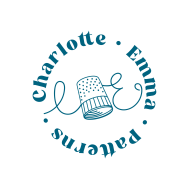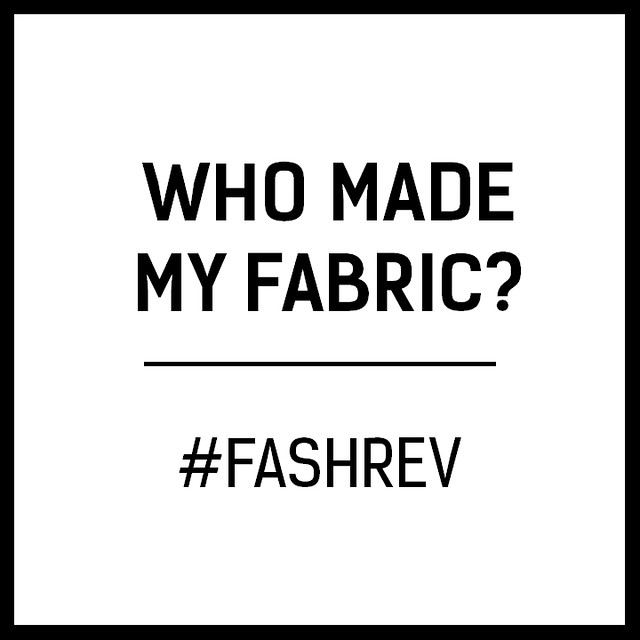Partly inspired by Fashion Revolution, I’ve become more conscious about how and where the fabric I buy is made. Just as Fashion Revolution challenges us to be curious and ask clothing companies who made our clothes, I’ve been asking some of my favourite fabric companies about the production of their fabrics. The information I have received so far is below (listed alphabetically by company). I’ll add to this post when I receive additional information & please do comment / get in touch if you can add more.
Previous thoughts from me on why it’s important to think about how our fabric is made here. Offset Warehouse deserve a mention, as an online fabric store which provides lots of information in their fabric listings, including country of manufacture, eco credentials and accreditors.
You may also be interested in my post about British fabric producers (including British wool, silk and lace fabrics).
♥ Art Gallery Fabrics
The cotton for the majority of Art Gallery fabrics is grown in the USA, Brazil and China, weaving is done in South Korea or China, and dying and printing in South Korea.
Art Gallery work with mills in South Korea which are public companies and have tight security measures to make sure the products they produce comply with all the local and international laws.
All the dyes and inks that we use are ecologically safe and have been tested and passed all the safety requirements required by international regulators.
♥ Atelier Brunette
Atelier Brunette fabrics are designed in France and produced in India – the cotton is grown in India, and weaving and printing takes place in India. Atelier Brunette have chosen to work in India due to the quality of Indian cotton and a personal connection with the country.
♥ Cloud9
Cloud9 Fabrics are produced in India, using only 100% certified organic cotton in the manufacturing of our base cloths and eco-responsible low impact dyes for printing and dying. We work closely with mills that are committed to ethical and responsible conduct.
More information is available on the Cloud9 website FAQ page.
♥ Cotton + Steel
Cotton + Steel fabrics are designed in the US and produced in Japan. The About page of the Cotton + Steel website includes a video showing the production process in detail.
♥ Free Spirit
Free Spirit quilting cottons are printed in Korea, and woven goods are made in India.
♥ Liberty
The cotton used to produce Liberty Tana Lawn is all grown in Egypt, woven in different locations across Europe, and printed in Italy. Crepe de Chine and Georgette fabrics are printed in Italy.
♥ Marimekko
This April, Marimekko published a list of its significant suppliers and some pictures from the factories making our clothes on Fashion Revolution day. The list of suppliers is available here.
Regarding the fabrics we use…we have our own fabric printing mill in Helsinki, Finland, where around a million metres of cotton, linen and cotton blend fabrics are printed every year to be sold by meter or to produce Marimekko clothes, bags and home textiles. The base fabrics to be printed are mainly sourced from fabric weaving mills in Germany, Turkey, Portugal, Peru and Lithuania. Raw cotton fibre for the fabrics is sourced all over the world depending on the quality, availability and price. Some fabric manufacturers also blend cotton from different countries to ensure the consistent quality of the fabrics. The quality of cotton from different countries can vary significantly from one year to another due to weather conditions during the growing season for example. To improve the transparency of our cotton supply chain and help improve cotton production for people and the environment, Marimekko is a member of the Better Cotton Initiative. Our goal is to increase the share of Better Cotton in our cotton fabrics significantly over the next years.
Our in-house printing mill does not possess the capacity or all the machinery and equipment needed to produce all of the fabrics used in our wide product collection. We place high value on the quality of the fabrics we use and our designers and sourcing team work hard to find the best fabric qualities for a reasonable price. In our clothing collections we use, for example, Italian, Japanese, Lithuanian, Portuguese, Korean, Turkish and Chinese fabrics, depending on the product. Italian fabric mills are world famous for the quality of their printing, whereas Japanese and Korean fabric manufacturers specialize in more technical fabrics and man-made fibres. Chinese manufacturers have a long heritage in silk production and printing.
Since Marimekko collections carry hundreds of products made of different materials and the different fabric qualities have a different production process, it’s difficult to give a comprehensive answer to your questions in one email. The basic fabric production process is more or less the same: fibre production, spinning, weaving or knitting, printing, finishing and cut-and-sew. Regarding the printing process in our in-house printing factory, please visit: https://www.marimekko.com/marimekko/design/from-sketch-to-fabric. However, the technical details and social and environmental impacts in different stages can be very different, depending on the fabric. Marimekko are currently preparing an information kit to be shared with store personnel and customers about different fabrics and their social and environmental aspects, but this publication is still in the process and will most likely be published after the summer.
Further information is available on the Marimekko website: http://company.marimekko.com/sustainability
♥ Merchant & Mills
The Merchant & Mills website includes information on country of manufacture in the listings of many of their fabrics. They have a dedicated section of organic fabrics.

